| Kite Aerial Photography (kap) is not new, but the use of a digital camera has updated the technique. The immediacy of digital means that images can be examined within minutes of their being taken - essential where time in an area is limited and a later return may not be feasable. With the availability of 3+ Mp cameras, the thorny problem of image quality has been overcome.
I chose an Olympus C3030Z camera because it is very flexible, allowing controls to be set manually or automatically, giving the best parameters for kap. It is also VERY strong - surviving several horrendous crashes. The quality of the image is second to none, allowing me to easily obtain A4 prints and even A3 with some help from Photoshop.
The kite is a sparless aerofoil from Greens Kites of Burnley, UK. They sell a kap kit complete with cradle to hold the camera, although I modified this to give extra protection.
Since originally writing this in 2001, digital has taken over the photographic world and the choice and quality of cameras has changed enormously. |
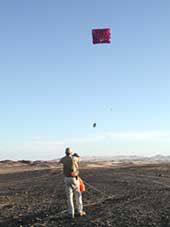
 |
| To carry out the survey work, several pieces of equipment were used.
For the topography, a total station theodolite was essential, given the large areas to be surveyed. We used models from Sokkia, which performed well in the hot, dusty conditions.
Laser technology has brought about innovations in measuring technology and we employed Leica Distomats to carry out much of the building survey work, especially to gain distances to inaccessible places - some of the buildings were unsafe to climb on and we wished to keep any damage to an absolute minimum.
|

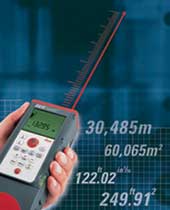 |
| During the 2003 season, we camped at Umm el-Dabadib. We needed a source of power for charging batteries and for lighting during the dark evenings but wanted to avoid using a generator because of the noise and smell, so went for solar power. House of Hastings in the UK kindly supplied us with solar panels and solar rechargeable lights. These proved to be very successful. |
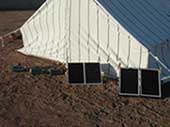
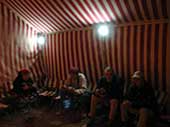 |
| Communication is important when surveying. We frequently work over long distances (1.6 km being the longest reading taken with the theodolite) and find the small two-way radios - available from many outlets - the best way to keep in contact. Even more important, is contact between roving groups who may wander into the desert, either in a vehicle or on foot. For these, more powerful radios are necessary and we are grateful to The
Communications Company for their support of our project by the loan of several radio sets. It gives us all peace of mind to know that we can get in touch should a problem occur. |
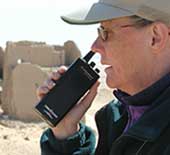 |
|